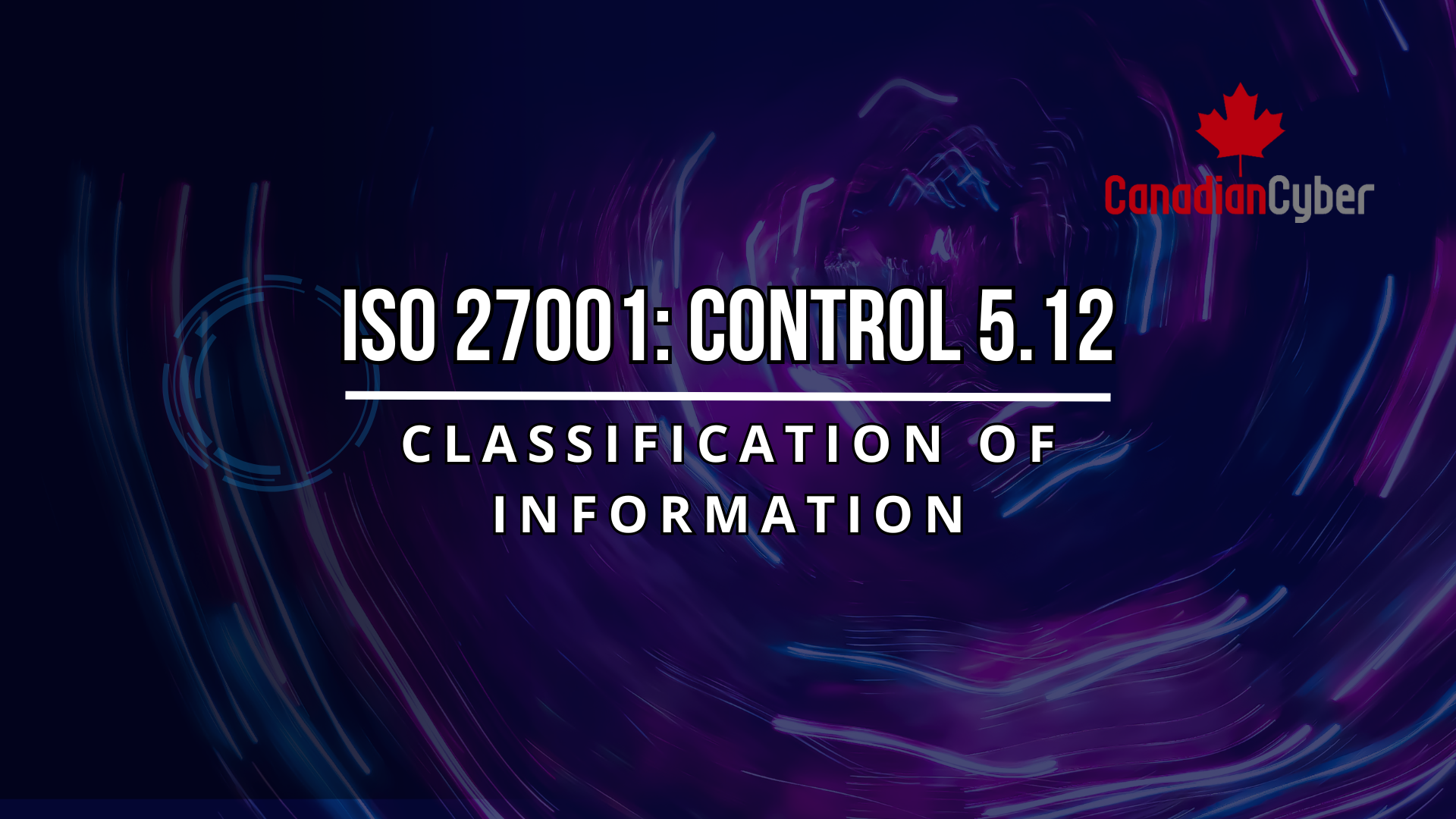
Abdul Samad Saleem

September 9, 2025
ISO 27001 Control 5.12 requires classifying information by sensitivity and value. With proper labeling and handling, businesses prevent leaks, save resources, and meet compliance standards.
Introduction
In every organization, not all information is created equal.
A lunch menu and a customer database don’t need the same level of protection but without classification, they might get treated the same way.
ISO 27001 Control 5.12 ensures that your most valuable information is identified, labeled, and protected appropriately so it doesn’t fall into the wrong hands.
Summary of Control 5.12: Classification of Information
🔒 Control Title: Classification of Information
📘 Source: ISO/IEC 27002:2022, Section 5.12
🧩 Control Category: Organizational
🔍 Attributes:
- Control Type: #Preventive
- Security Properties: #Confidentiality, #Integrity, #Availability
- Cybersecurity Concepts: #Identify, #Protect
- Operational Capabilities: #Information_Management
- Security Domain: #Protection_and_Defense
Control Objective
To ensure that information is classified according to its sensitivity, value, and risk, and is handled in a way that preserves its confidentiality, integrity, and availability.
Implementation Guidance
1) Define Classification Levels:
- Common examples:
- Public: No harm if disclosed (e.g., marketing brochures)
- Internal: For employees only (e.g., internal process docs)
- Confidential: Could cause harm if disclosed (e.g., client contracts)
- Restricted / Highly Confidential: Could cause serious harm (e.g., trade secrets, financial records)
2) Establish Classification Criteria:
- Consider legal, contractual, operational, and reputational impacts
3) Label Information Clearly:
- Physical: stamps, watermarks, header/footer labels
- Digital: metadata tags, document headers, file naming conventions
4) Integrate Classification into Processes:
- Apply during document creation, system setup, and onboarding
- Ensure classification influences access control, encryption, and handling procedures
5) Train Staff:
- Employees should understand each classification level and its handling requirements
Why This Control Matters
Without proper classification:
- Sensitive information might be overexposed to unauthorized users
- Resources might be wasted over-protecting trivial data
- Compliance requirements (e.g., privacy laws, industry standards) could be missed
With classification:
- Security measures match data sensitivity
- Audit and compliance reporting becomes easier
- Risk of data leaks is reduced
Common Pitfalls to Avoid
- Having too many classification levels, making the system overly complex
- Not updating classifications as data changes value over time
- Failing to apply classification to backups and archived data
- Relying only on manual labeling without automation where possible
Canadian Cyber’s Take
At Canadian Cyber, we help organizations create clear, practical classification frameworks that align with ISO 27001 and real-world operations.
We make sure your data isn’t just labeled it’s actually protected in a way that makes sense for your business.
Want to Classify Your Information Like a Pro?
We can help you design, implement, and maintain a classification system that safeguards your most critical assets.
👉 Click here to start your classification journey.
